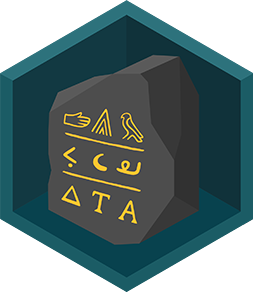Report on the history of a language
Research a language's history, create a simple illustrated timeline and short report, and present key changes, influences, and examples to classmates.



Step-by-step guide to report on the history of a language
11. Language Development: What Do Children Say? (audio only)
Step 1
Choose one language you want to study and say its name out loud.
Step 2
Gather your research sources such as one book or two kid-friendly websites and bring them to your workspace.
Step 3
Look up when and where the language first appeared and write a short note about its origin.
Step 4
Find three major influences on the language such as contact with other languages migrations or historical events.
Step 5
Write each influence on its own sticky note.
Step 6
Find three key changes the language went through such as a new script grammar shifts or sound changes and note the dates if you can.
Step 7
Write each key change on a separate sticky note with its date or century.
Step 8
Choose two or three example words or short phrases from different time periods that show how the language changed.
Step 9
Write each example with a simple translation on your paper.
Step 10
Draw a horizontal timeline on your paper and mark the earliest and latest dates you found.
Step 11
Place your sticky notes along the timeline in the right order from oldest to newest.
Step 12
Add a small drawing next to each sticky note to show what happened using your colouring materials.
Step 13
Write a short 4 to 6 sentence report that summarizes the language's history influences and the examples you collected.
Step 14
Practice saying two or three sentences from your report out loud so you are ready to present to classmates.
Step 15
Add a clear title and your name to the project and share a photo or description of your finished timeline and report on DIY.org.
Final steps
You're almost there! Complete all the steps, bring your creation to life, post it, and conquer the challenge!


Help!?
What can we use instead of sticky notes or a kid-friendly book if they aren't available?
Cut plain paper or index cards into small squares and label each one to follow the instruction to 'write each influence on its own sticky note,' and use library books or reputable websites printed or saved as PDFs for the 'one book or two kid-friendly websites' research step.
What should I do if I can't find exact dates for the key changes to place on my timeline?
Write approximate dates or centuries with 'c.' on each sticky note as the instructions suggest noting dates if you can, and place them in order on your timeline using arrows or brackets to show uncertain placement.
How can I change the activity for younger children or make it more challenging for older students?
For younger kids, simplify by picking one influence and two example words, using drawings and fewer sticky notes while a parent reads kid-friendly websites, and for older students add primary-source quotes, exact citations from your book or websites, phonetic spellings of the example words, and expand the 4–6 sentence report into a longer summary.
How can we enhance or personalize the finished timeline and report before sharing on DIY.org?
Add a small map showing where the language appeared, record audio of you saying the example words and the two practice sentences from your report, color-code influences with your colouring materials, and decorate the title area with your name before photographing or describing the project for DIY.org.
Watch videos on how to report on the history of a language
Elementary Language Arts Lessons | Homeschool Pop
Facts about language history
🌊 Languages often borrow words when cultures meet — English contains vocabulary from Norse, French, Latin, Greek, and many others.
🧭 Linguists reconstruct ancient proto-languages (like Proto-Indo-European) by comparing similarities across related languages.
📜 Old English (like the language of Beowulf) looks very different from Modern English and is hard for most modern readers to understand.
🔤 Some languages have switched writing systems: for example, Turkey changed from Arabic to a Latin-based alphabet in 1928.
🌍 There are roughly 7,000 languages spoken today, but many are endangered and could disappear in coming decades.
How do I help my child research and present the history of a language?
What materials are needed to make a simple illustrated timeline and report on a language's history?
What ages is a language history report with a timeline suitable for?
What are the benefits of doing a language history report activity with my child?


One subscription, many ways to play and learn.
Only $6.99 after trial. No credit card required



